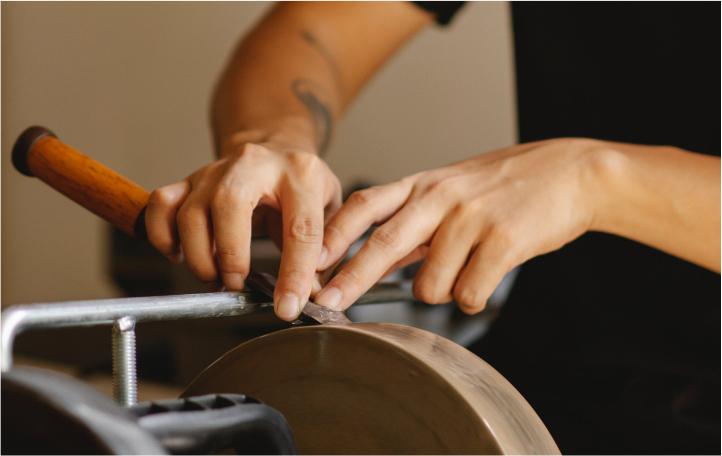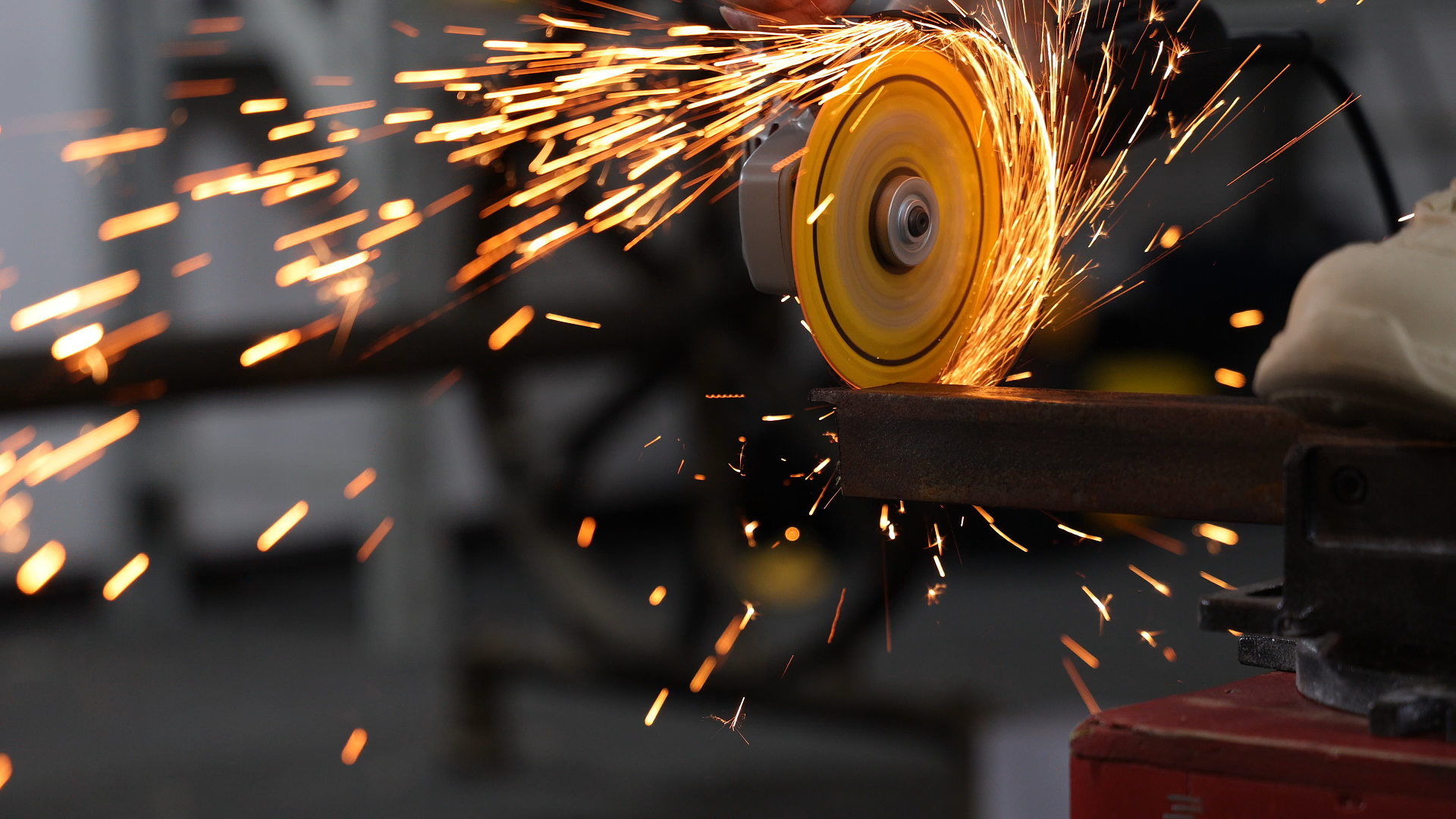Understanding the Different Sanding Disc Backings – Cloth, Film, Hook & Loop, and PSA
Sanding discs are essential tools in woodworking, metalworking, and even auto body repair. However, not all sanding discs are the same—one of the biggest differences lies in the backing material. The backing affects durability, flexibility, and how the disc attaches to the sander.
If you're unsure which sanding disc to choose, this guide will break down the four main types of sanding disc backings—Cloth, Film, Hook & Loop, and PSA (Pressure-Sensitive Adhesive)—so you can confidently select the right one for your project.

Cloth-Backed Sanding Discs
What is it?
Cloth-backed sanding discs use a fabric material (usually cotton, polyester, or a blend) as the backing. The cloth is strong and tear-resistant, making it ideal for demanding sanding jobs.
Key Features:
✅ Durable & Tear-Resistant – Can withstand heavy pressure without tearing.
✅ Flexible – Can be used on contoured surfaces.
✅ Long-Lasting – Generally lasts longer than paper or film-backed discs.
Best For:
-
Metalworking: Great for grinding and sanding metal surfaces.
-
Woodworking: Ideal for rough sanding and shaping wood.
-
Heavy-Duty Use: Best for professional or industrial applications.
Pros & Cons:
| Pros | Cons |
|---|---|
| Highly durable and long-lasting | More expensive than other backings |
| Works well under high pressure | Less flexible than film-backed discs |
| Suitable for both hand sanding and machine sanding | Not as smooth as film for fine finishes |
Film-Backed Sanding Discs
What is it?
Film-backed sanding discs use a thin plastic backing (usually polyester). This type of backing is smooth, waterproof, and resistant to tearing, making it perfect for precision sanding.
Key Features:
✅ Extremely Smooth & Even Sanding – Provides consistent sanding results.
✅ Waterproof – Can be used for wet sanding.
✅ Tear-Resistant – More durable than paper-backed discs.
Best For:
-
Automotive Sanding: Perfect for car paint prep and refinishing.
-
Fine Wood Finishing: Great for smoothing surfaces before applying stain or paint.
-
Wet Sanding: Works well when used with water for a finer finish.
Pros & Cons:
| Pros | Cons |
|---|---|
| Provides a very smooth, even sanding result | Can be more expensive than paper-backed discs |
| Excellent for wet sanding applications | Less flexible than cloth-backed discs |
| Resistant to tearing and cracking | Not as strong for heavy-duty grinding |
Hook & Loop Sanding Discs
What is it?
Hook & Loop sanding discs have a Velcro-like fabric backing that allows them to be quickly attached and removed from a sander. This makes them very convenient for projects requiring multiple grit changes.
Key Features:
✅ Quick & Easy to Change – No glue or tools needed to swap discs.
✅ Reusable – Can be removed and reattached multiple times.
✅ Flexible & Versatile – Works on a variety of surfaces.
Best For:
-
Woodworking: Ideal for furniture sanding and finishing.
-
Drywall Sanding: Great for smoothing walls before painting.
-
General-Purpose Sanding: Suitable for a wide range of DIY and professional projects.
Pros & Cons:
| Pros | Cons |
|---|---|
| Easy to swap grits quickly | Can lose grip over time |
| Great for curved or contoured surfaces | Slightly less secure attachment compared to PSA discs |
| Can be reused multiple times | More expensive than PSA discs |
PSA (Pressure-Sensitive Adhesive) Sanding Discs
What is it?
PSA sanding discs have a sticky adhesive backing that securely attaches to a sander. Once applied, they stay firmly in place, making them perfect for extended sanding sessions.
Key Features:
✅ Strong Adhesion – Won't move or slip during sanding.
✅ Best for Continuous Use – Great for long sanding jobs.
✅ Available in Many Grits – Common in both fine and coarse options.
Best For:
-
Metal & Wood Sanding: Excellent for industrial sanding tasks.
-
Professional Use: Ideal for workshops where discs need to stay in place.
-
Extended Use: Great when you don’t need to switch grits frequently.
Pros & Cons:
| Pros | Cons |
|---|---|
| Very secure attachment | Cannot be reused once removed |
| Ideal for extended sanding jobs | Requires a clean surface for proper adhesion |
| Available in a wide range of grit options | Can be messy if adhesive residue is left behind |
Which Sanding Disc Backing is Right for You?
| Backing Type | Durability | Flexibility | Reusability | Best For |
|---|---|---|---|---|
| Cloth | ⭐⭐⭐⭐⭐ | ⭐⭐⭐ | ❌ | Heavy-duty sanding, metal, wood |
| Film | ⭐⭐⭐⭐⭐ | ⭐⭐⭐⭐ | ❌ | Precision sanding, automotive, wet sanding |
| Hook & Loop | ⭐⭐⭐ | ⭐⭐⭐⭐ | ✅ | Quick grit changes, woodworking, drywall |
| PSA | ⭐⭐⭐⭐ | ⭐⭐ | ❌ | Long sanding sessions, professional use |
How to Choose the Right Sanding Disc?
Choosing the right sanding disc backing depends on your specific needs:
-
Need durability for heavy-duty sanding? → Choose cloth-backed discs.
-
Want a super smooth, precise finish? → Go for film-backed discs.
-
Need to switch grits quickly? → Hook & Loop discs are best.
-
Want a strong, secure attachment for long sanding jobs? → Pick PSA discs.
By understanding the differences between these backings, you can make an informed decision and get the best results for your project.
Get the Best Sanding Discs from Abrasives Master!
At Abrasives Master, we offer premium-quality film, hook & loop, and PSA sanding discs designed for various applications.
✨ Why Choose Abrasives Master?
✔ High-quality materials for durability and efficiency
✔ Wide grit selection for every sanding need
✔ Expert support to help you find the perfect disc
Upgrade your sanding experience today! Shop with Abrasives Master and achieve professional results every time. 🚀
Continue Reading

How to Polish Rocks Using Sandpaper or a Cordless Rotary Tool

